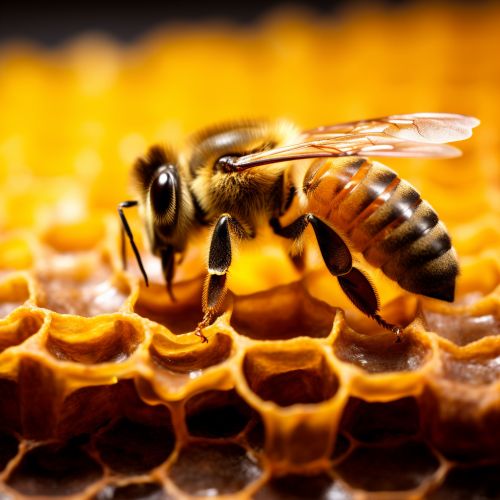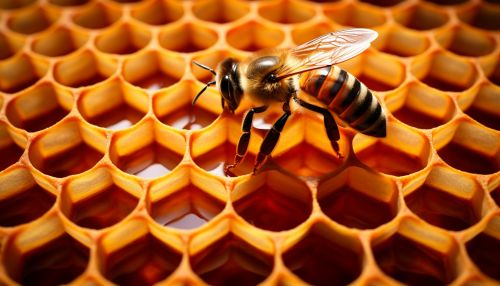Bee dance
Introduction
The bee dance is a form of communication used by honey bees (Apis mellifera) to convey information about the location and quality of food sources to their fellow hive members. This complex behavior, which involves a series of movements and vibrations, is one of the most remarkable examples of non-human communication and has been the subject of extensive scientific research.
History of Discovery
The bee dance was first described in detail by Austrian zoologist and Nobel laureate Karl von Frisch in the mid-20th century. Von Frisch's pioneering work on the subject, which demonstrated that bees communicate the distance and direction of food sources through a series of specific movements, revolutionized our understanding of insect behavior and communication.


Types of Bee Dances
There are two main types of bee dances: the round dance and the waggle dance. Both dances are performed by worker bees that have returned to the hive after finding a food source.
Round Dance
The round dance is performed when the food source is located close to the hive, typically within 50-100 meters. The bee moves in a circular pattern, alternating between clockwise and counterclockwise directions. This dance does not provide information about the direction of the food source, but the intensity of the dance indicates the quality of the source.
Waggle Dance
The waggle dance is performed when the food source is farther away. The bee moves in a figure-eight pattern, with a straight "waggle run" in the middle. The direction of the waggle run relative to the sun indicates the direction of the food source, while the duration of the waggle run indicates the distance. The intensity of the dance, like in the round dance, indicates the quality of the food source.
Mechanism of Communication
The bee dance communicates information through a combination of visual, tactile, and olfactory cues. Other bees observe the dance and interpret the movements and vibrations to determine the location of the food source. The dancer bee also distributes food samples to the observing bees, allowing them to smell and taste the food source.
Role in Hive Behavior
The bee dance plays a crucial role in the foraging behavior of the hive. By communicating the location of food sources, the dance allows the hive to efficiently allocate its foraging resources and maximize its food intake. This is particularly important in the context of the hive's need to collect large quantities of nectar for honey production.
Scientific Significance
The discovery and study of the bee dance has had profound implications for our understanding of animal behavior and communication. It has provided insights into the cognitive abilities of insects, the evolution of complex behaviors, and the role of communication in social organisms.
See Also
References
- Von Frisch, K. (1967). The Dance Language and Orientation of Bees. Harvard University Press.
- Gould, J. L., & Gould, C. G. (1988). The Honey Bee. Scientific American Library.
